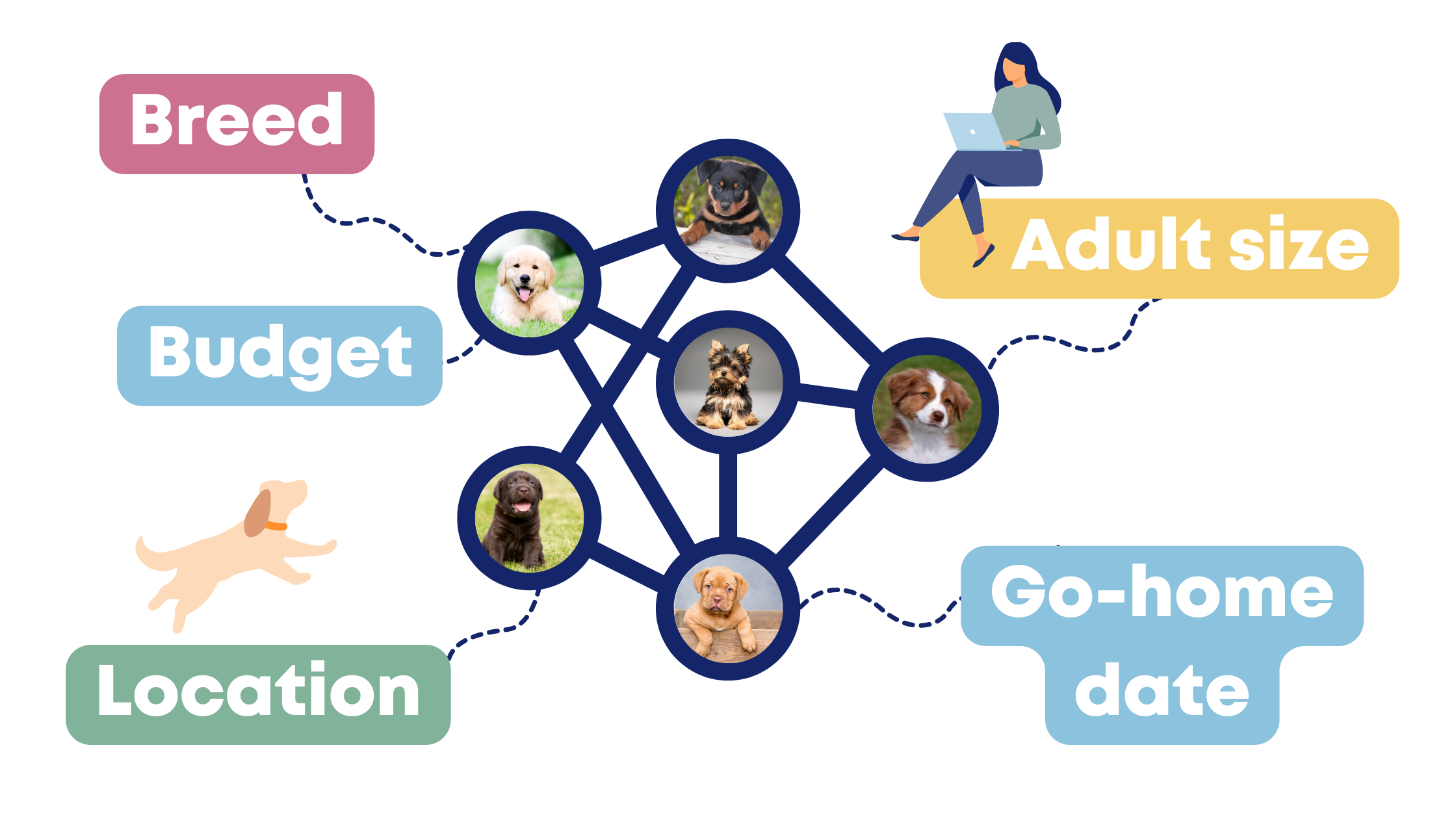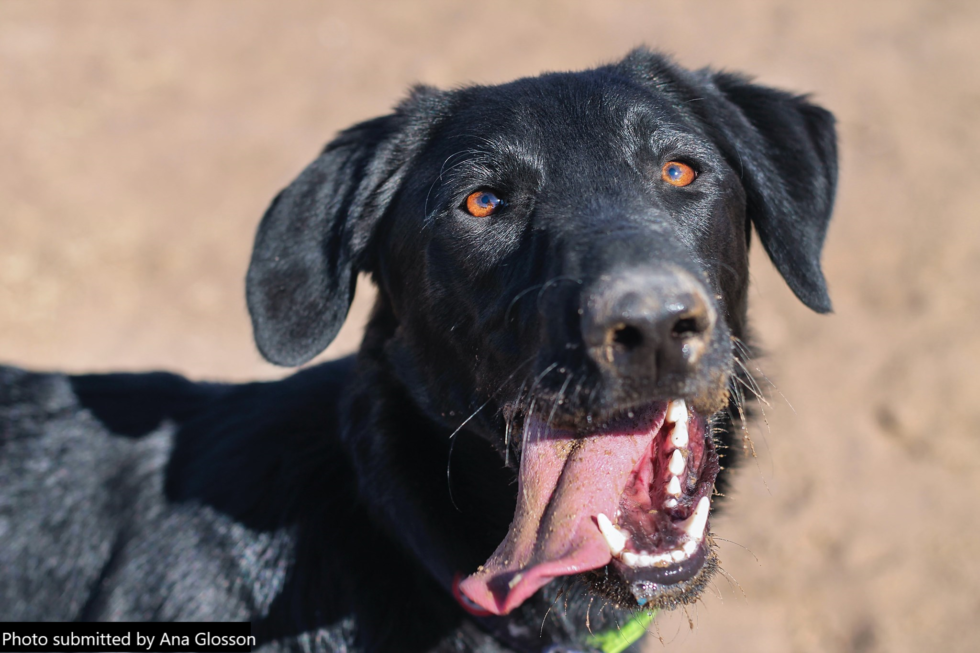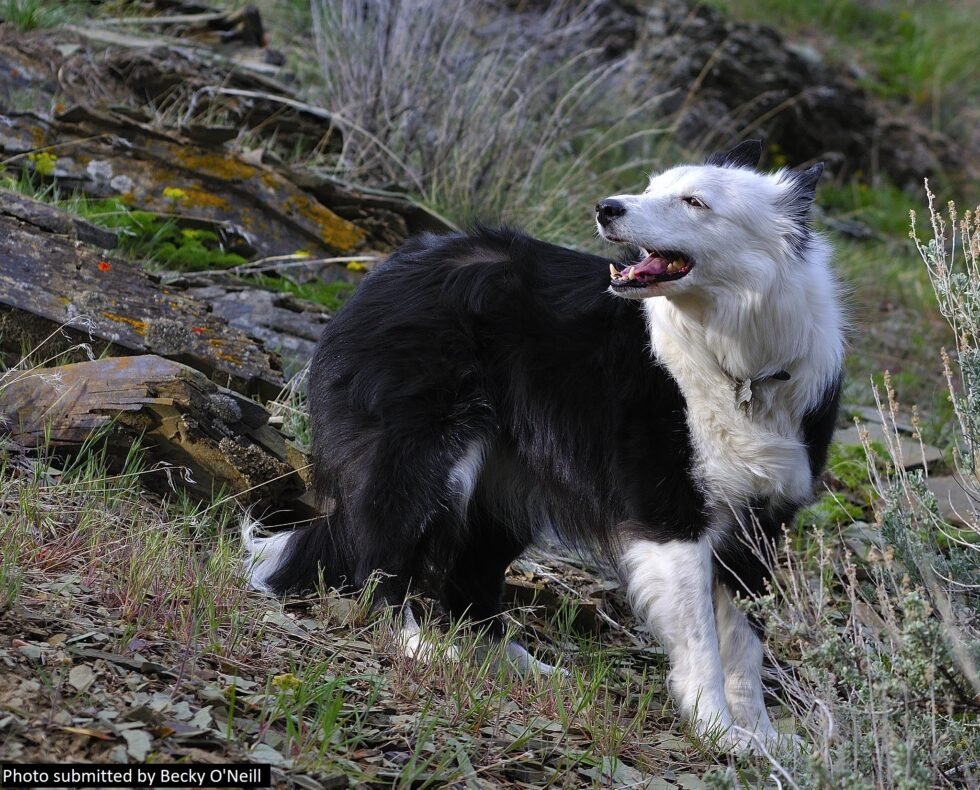Welcome to the
Learning Center
TellTail’s Learning Center contains valuable resources for both responsible dog breeders and curious pet buyers. Sniff around and discover something new!
Select a category or scroll down to browse all. Return to all articles

Featured Resources
Resources
Heritability of Behavior Meta-Analysis
Heritability is a measure of how differences in genes account for differences in traits. Heritability does not indicate what percentage or proportion is determined through genes but rather what percentage or proportion of the variation in a trait in a population can be attributed to genetic differences.
Heritability of Behavior in Service Dogs
This study aimed to uncover if the variation in tested behavioral characteristics between dogs was heritable. Another goal was to determine if a structured breeding program focused on enhancing working characteristics had any effect on the level of heritability of desired characteristics for service dogs.
Genetics of Inbreeding Depression
This study is a broad review of inbreeding depression research to date, focusing on the genetic mechanisms hypothesized to produce reduced fitness in homozygous populations and hybrid vigor in the offspring of outcrosses.
Sex-Specific Aging in Dogs?
This study investigates sex differences in longevity and causes of death in dogs taking into account the effect of neutering.
Inbreeding Depression and Lifespan
This study investigates evidence for inbreeding depression in lifespan in dogs at three scales: comparing mixed breed and purebred dogs, across dog breeds, and within one dog breed. It also accounts for the strong effect of body size on lifespan in dogs.
Behavioral Resilience in Australian Stock Working Dogs
This study compared DNA from two breeds, derived from common founder stock but selected for different purposes, to determine whether the genetics underlying desirable behavior traits could be identified.
What Genes Control White Spotting in Dogs?
This 2014 paper examined the role of mutations in a gene that is known to affect white spotting in dogs. Specifically, this paper looked at polymorphisms (another word for mutations, meaning “different versions”) in the MITF (“microphthalmia associated transcription factor”) gene. The paper looked at the promoter region of the gene.
Relative Muzzle Length as a Factor for BOAS
The papers by Packer et al. (2015, just Packer from here on) and Liu et al (2017, just Liu from here on) on risk factors for BOAS are often pitted against each other when critics and supporters of extreme brachycephaly in dogs engage in discussion.
The Relationship Between Maternal Care and Puppy Behavior
Maternal care has been shown to have an influence on individual development in many species including rodents, primates, humans, and adult dogs. This study builds off those findings to investigate if maternal care has an influence on puppy behavior.
Conformational Risk Factors of BOAS in Three High-Risk Breeds
This study identifies breed-specific conformational risk factors for brachycephalic obstructive airway syndrome (BOAS) in three breeds with extreme brachycephaly: pugs, French bulldogs, and bulldogs.
Variation in Neuroanatomy Across Dog Breeders
Different brain areas are associated with controlling different neural processes, and the size of a brain area in a species tends to correlate with how much that species uses that process. For example, olfactory (smell) areas tend to be larger and more complex in animals that depend heavily on smell, while prefrontal cortices are larger in animals with high cognitive abilities, such as humans and primates.
Facial Conformation and Risk of BOAS
This two-part study investigates risk factors for brachycephalic obstructive airway syndrome (BOAS) by looking first across dogs of diverse breeds and conformations, and second, across brachycephalic dogs.
Temperament Testing Fundamentals
Temperament traits include both stable traits and adjustable traits. The stable traits are typically hard wired. It is difficult for a breeder to change these traits in the puppies for the most part. The puppy evaluation simply identifies these stable traits so puppies can be matched with families that will meet their unique needs.
Why Large Dogs Die Young
Large dogs die younger than small ones. This well-known pattern poses a conundrum for evolutionary biologists. Across species, large mammals live longer than their small counterparts; for example, an elephant versus a mouse. In marked contrast, within species large size seems to carry costs in terms of an individual’s life span. The phenomenon has been documented in several species, but the negative relationship between size and lifespan is most evident in the domestic dog.
A Mess of Tests: Temperament Testing Research and Resources
This article will present some of the current information and data that is available regarding temperament testing puppies, to support breeders as they make their own determination about temperament testing for their program.
Is your breed the right fit for an interested future family?
Choosing perfect homes for your puppies is what I believe to be one of the most difficult parts of being a responsible dog breeder. There are so many “what ifs.” Here are some of the “what ifs” that go through my head when I open up my puppy application for new applicants:
What if the new families don’t love my puppies as much as I did?
What if the new families don’t know how to handle illness and emergencies?
What if the new families don’t ever keep in touch with me?
What if a family breaches my contract?
What if you felt empowered to choose new families (customers) for your puppies based on an application or interview process that gives you confidence in a new family rather than doubt?
A new perspective on determining best age of spay or neuter
Desexing has both physical and behavioral implications. Spay/neuter timing needs to consider the both the physical and behavioral ramifications of allowing a dog to remain intact. I'll cover both here, and also present a risk analysis of physical issues associated with spay/neuter (S/N).
Factors Affecting Reproductive Performance
Researchers were interested in studying reproductive success in female dogs (bitches) after artificial insemination (AI). Artificial insemination refers to the deliberate introduction of semen into a female by a veterinarian. No natural breedings were included in this study.
Caloric requirement for pregnant and nursing dogs
A lot of breeders don’t understand the caloric requirements of a nursing mom. During the last trimester of pregnancy, her caloric needs are two to three times her normal caloric needs. During nursing her caloric needs can be as much as six times her normal caloric needs, depending on her litter size and metabolism. This will get a little math-y and just a little technical. I think it’s better if we can understand a little of the why before we learn the how.
Top 5 lessons you wished you knew when you first started breeding
Here are the five top lessons I wish I knew (even if I wasn’t ready to hear them), and know that I’m presenting them to you not wanting to discourage you, but wanting you to know what you are getting yourself into. You will be bringing little lives into this world you are responsible for, so this is as much for them as for you.























